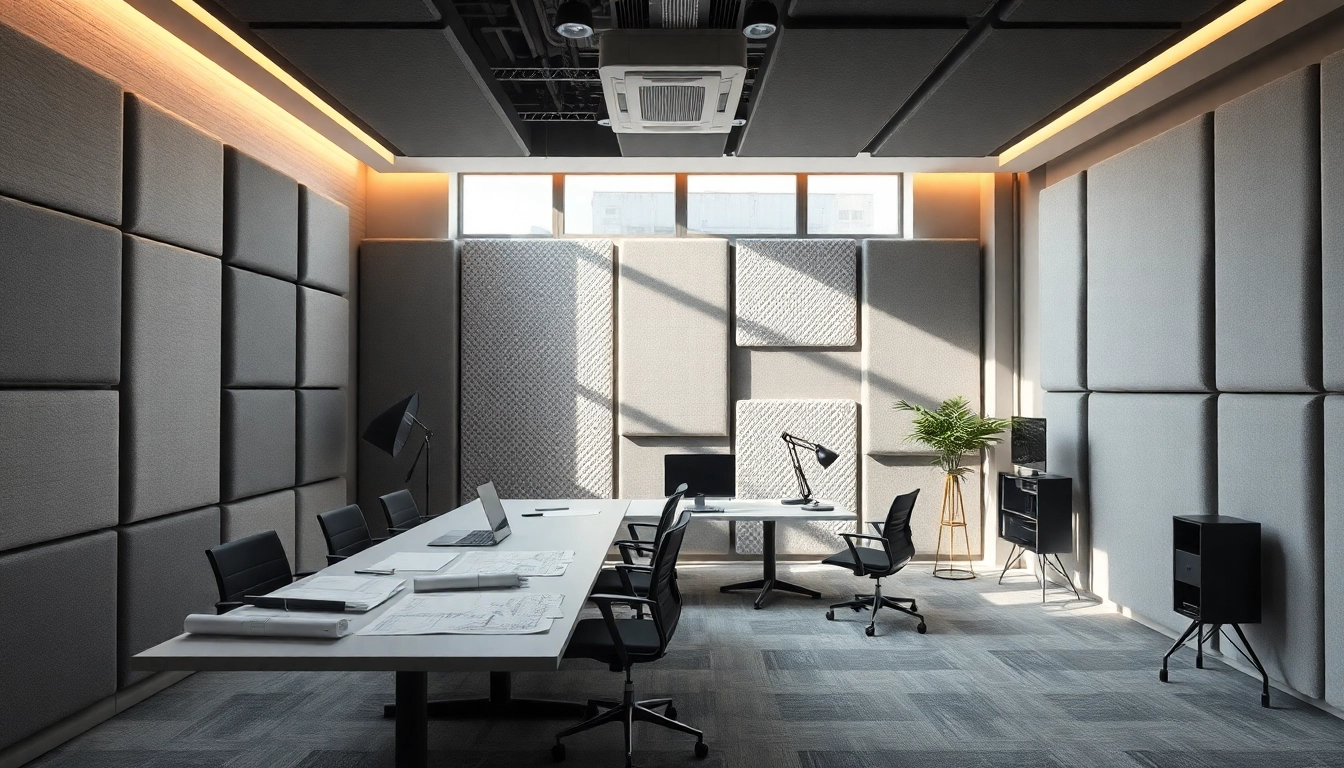Understanding Acoustic Principles for Better Design
Creating an environment where sound is experienced in its best form is essential in today’s acoustically aware world. Acoustic design impacts not just the sound quality but also the emotional response people have to a space. To achieve superior acoustic performance, it is vital to understand the underlying principles governing sound. This article will explore these principles, common challenges faced in residential settings, and the tangible benefits of engaging with professional acoustic consultancy, such as those provided at https://www.polarisacoustics.com.
Key Acoustic Concepts That Influence Sound Quality
At the heart of acoustic design are several fundamental concepts that dictate how sound behaves in a space:
- Reflection: When sound waves bounce off surfaces, they create reflections that can either enhance or degrade sound quality. These reflections depend on the materials and surfaces they encounter.
- Absorption: Different materials absorb sound at varying degrees. Soft materials like carpets or curtains can significantly dampen sound, while hard materials tend to reflect it.
- Diffusion: This refers to the scattering of sound waves in different directions, which can help to reduce echo and create a more balanced auditory experience.
- Frequency Response: Different frequencies interact uniquely within a space, with low frequencies often needing more careful treatment due to their longer wavelengths.
The Importance of Sound Measurements
Accurate sound measurements are vital in any acoustic assessment. By gathering data on sound levels, reverberation time, and frequency response, professionals can identify specific acoustic challenges and develop targeted solutions. Tools such as sound level meters and software for analyzing sound frequency patterns are often employed in this process.
Common Acoustic Challenges in Residential Settings
In residential environments, several challenges can impede optimal sound quality:
- Noise Pollution: External noise from traffic, neighbors, or other sources can infiltrate a home, disrupting comfort and tranquility.
- Unwanted Echo: Spaces that are too reflective or poorly treated can result in confusing echoes that impact speech clarity and overall sound quality.
- Insufficient Sound Isolation: In multi-unit buildings, inadequate soundproofing can lead to disturbances from adjoining units, impacting privacy and peace.
Benefits of Professional Acoustic Consultancy
Engaging a professional acoustic consultancy can yield significant advantages when designing or renovating residential spaces.
How Acoustic Consultants Improve Residential Projects
Acoustic consultants bring expertise to identify sound-related issues specific to a space. They provide a range of services, including:
- Detailed Assessments: Comprehensive evaluations that pinpoint existing acoustic issues in the environment.
- Custom Solutions: Tailored recommendations based on the specific acoustics of the space and the needs of its occupants.
- Implementation Support: Guidance during the installation of acoustic materials to ensure they provide the intended benefits.
Case Studies: Success Stories from https://www.polarisacoustics.com
To illustrate the impact of professional acoustic consultancy, consider the following success stories:
- Family Home in an Urban Setting: A family residing in a bustling city faced noise pollution from traffic and neighbors. After consulting with acoustic professionals, soundproof windows were installed along with treatments for walls and ceilings, significantly enhancing the family’s living environment.
- Home Recording Studio: A homeowner desired an effective space for music recording. By engaging with acousticians, they received tailored designs that included bass traps and diffusers. The result was a studio space free of unwanted reflections and echoes, allowing for high-quality recordings.
Long-Term Benefits of Sound Treatment Investments
Investing in sound treatment can have long-lasting benefits beyond immediate comfort. Studies show that improved acoustics can lead to:
- Enhanced Focus: Better sound environments are linked to improved concentration and productivity.
- Health Benefits: Reduced noise pollution can decrease stress and improve overall well-being.
- Higher Property Value: Well-acoustically treated spaces are often more desirable in the real estate market.
Services Offered by Acoustic Experts
Acoustic experts provide a suite of services tailored to meet diverse acoustic needs.
Comprehensive Acoustic Assessments
Offering full evaluations of sound performance in spaces, these assessments include on-site measurements, analysis of sound transmission paths, and a report detailing areas for improvement.
Customized Solutions for Unique Spaces
Every space has its own acoustic characteristics. Acoustic experts develop specific treatment plans that might involve adding sound-absorbent panels, sealing gaps in walls, or rearranging furniture to optimize sound quality.
Post-Installation Support and Follow-ups
After installation, professionals often provide follow-up evaluations to assess the effectiveness of the acoustic treatments and adjust as necessary. This ensures continual optimization of the sound environment.
Self-Assessment: Is Your Space Optimally Acoustic?
Homeowners can engage in self-assessment to determine the acoustic performance of their spaces and potentially identify areas for improvement.
DIY Soundproofing Techniques for Homeowners
While professional consultation is valuable, several DIY solutions can help improve home acoustics:
- Add Rugs and Carpets: These can effectively absorb sound and reduce echo.
- Seal Gaps and Cracks: Ensure windows and doors are properly sealed to prevent noise infiltration.
- Use Bookcases and Heavy Curtains: These can act as barriers that absorb sound.
Identifying Poor Acoustic Performance Indicators
Some signs that indicate poor acoustic performance may include:
- Increased echo when speaking or during sound playback.
- A noticeable amount of outside noise entering the space.
- Conversations from other rooms being audible.
Resources for Further Acoustic Learning
For those interested in deepening their knowledge of acoustics, resources such as books on acoustic design, online courses, and webinars can provide valuable insights. Professional organizations often have a wealth of information and can also assist in connecting individuals with qualified acoustic consultants.
Future Trends in Acoustic Design and Technology
The field of acoustic design is continuously evolving, driven by technological advancements and innovative materials.
Innovative Materials Impacting Sound Quality
Research and development in new materials promise exciting changes for acoustic treatment. Innovative sound-absorbing materials are being created from natural fibers and other sustainable sources, offering eco-friendly options for sound management.
Technology’s Role in Acoustic Simulations and Planning
Modern technology has enhanced the ability to simulate acoustics in virtual environments. Computer-aided design (CAD) software helps planners visualize how sound waves will interact with various surfaces, allowing for finer design adjustments at the conceptual stage.
Predictions for the Future of Acoustic Environments
As our understanding of acoustics deepens, future environments will likely prioritize sound quality in unique and beneficial ways. This could include integrating acoustic solutions into urban planning to create quieter, more efficient public spaces that enhance overall urban life.



